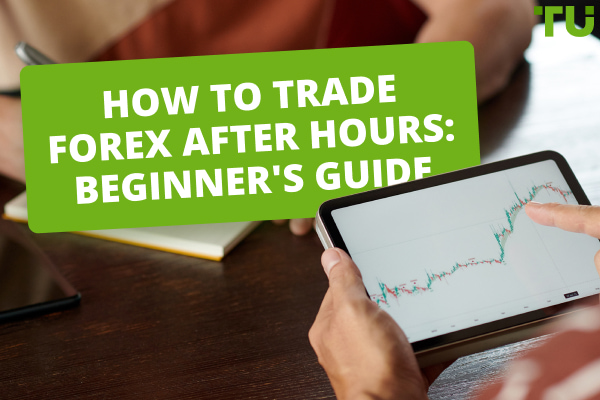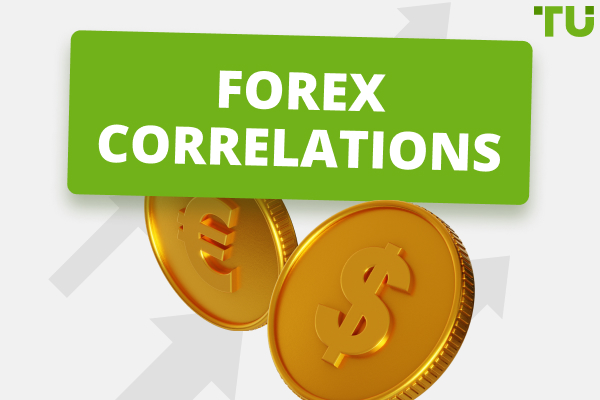Editorial Note: While we adhere to strict
Editorial Integrity,
this post may contain references to products from our partners. Here's an explanation for
How We Make Money.
None of the data and information on this webpage constitutes investment advice according to our
Disclaimer.
eToro - Best Stock Broker for 2024
eToro is a multi-asset platform which offers both investing in stocks and cryptoassets, as well as trading CFDs.
According to analysts at Credit Suisse, the most profitable assets over the past 115 years were stocks, which overtook one of the most popular tools among professional investors: bonds. Currency pairs, gold, and real estate: all these instruments have failed to show the growth that stocks have shown steadily for many years.
Nevertheless, analysts recommend not chasing profits, as they recall what happen to the energy giant Enron's securities and how investors in the world's biotech hope, Theranos corporation, were mistaken. At the head of any reliable trading system is the rule of risk diversification. And in a steadily growing stock market, the best diversification is investing in stock indices.
From this overview, you will learn:
· What are the exchange price indices?
· The major world Forex indices.
· The history of the emergence of stock indices in Forex.
· The benefits of trading stock indices.
· Forex or stock exchanges: What to choose for a novice investor.
· Methods for calculating stock indices.
· The advantages of index trading versus investing in securities.
· Index trading strategies: Major influencing fundamentals and technical analysis.
· The best platforms on which to trade Forex price indices.
What are the stock price indices?
Stock exchange price indices are aggregated values calculated from the prices of multiple assets included in the indices basket. A basket is a collection of assets grouped according to specific criteria. These instruments are considered exchange-traded because their derivative securities (derivatives) are quoted on stock exchanges. In addition to the source of statistical information, they are also an investment object.

-
Country (composite). Reflects the economic situation of an individual country.
-
Industry-specific. Consists of companies from the same industry.
The dynamics of the price movement of stock indices make it possible to estimate the country's economy or its industry in percentage terms.
There is also another index classification:
-
By the type of calculation (more of that below).
-
Geographically. For example, a basket might include assets from several countries or countries from a specific region.
-
By structural content. For example, indices may include a basket of currencies, such as dollar indices. Also, the basket can consist of several types of assets such as stocks, bonds, etc.
The indices cannot serve as an object of buying or selling, since the indices are only a summary of statistics for a basket of securities. Therefore, the primary exchange-traded asset is futures on particular indices. A secondary asset is ETF stocks that invest money in one or more securities, including indices futures.
What are the stock price indices?
Stock exchange indices of the USA and Europe
-
Calculated since 1971. An index of technology companies that reflects the development of innovative industries. Includes over 3000 corporations. It is calculated based on the weighted average prices at the end of trading. It is the fastest-growing index instrument in the world.
-
One of the main indicators of the US economy. Calculated by the auditing company Standard & Poors’s since 1957. The basket includes more than 500 US corporations whose securities are the most liquid. The calculation principle is weighting by capitalization. Also you can be interested in the best time to trade SPX.
-
One of the oldest US market indices, with a basket of 30 companies. Initially, it included exclusively industrial corporations, which gave it the corresponding name. Today there are companies from different industries. Its calculation has also changed. If earlier the arithmetic average of the companies' prices in the basket was used, now a scalable average is used (it is beyond the scope of this article to get into the calculation formula).
-
The German economy barometer, calculated as the capitalization-weighted average of the country's largest companies' stock prices in free circulation. Calculated from 1988 and includes about 30 corporations.
-
A major indicator of the UK economy. Calculated since 1984. The basket includes 100 companies with the largest capitalization and whose securities are traded on the British stock exchange, LSE. Calculation method: geometric mean.
Stock exchange indices in Asia
-
Tokyo Stock Exchange Index. It has been calculated since 1950 as a simple arithmetic average of shares of the most liquid 225 companies in the first section of the exchange. The basket is reviewed at least once a year.
-
Calculated since 1990. The calculation includes the daily quotes of all shares included in quotation lists A and B of the Shanghai Stock Exchange.
History of the appearance of stock indices in Forex
The concept of a stock index dates back to the late 1800s. According to economic theory, Charles Henry Doe was the first person to offer an index score to represent an industry's health. Then the 11 largest US transport companies were placed into the index basket. This tool still exists today, but now expanded to 20 companies.
Later, other indexes were created. The second to appear was the well-known Dow Jones, reflecting the financial conditions of the industrial sector. Initially, the appearance of stock indices was associated with the need to have a kind of indicator of the economic development of both a separate industry and the economy as a whole. Subsequently, they turned into a full-fledged trading instrument. And today, on the stock exchanges, you can find not only the classic NASDAQ or Nikkei 225 but also exchange-traded investment indices funds like ETFs.

Forex brokers are also keeping up with the stock exchanges, offering CFDs on major stock indices. The only difference is that on the exchange, the trader becomes the owner of the security. CFD in Forex is a contract for the price difference, a bet on what the price will be over time.
Benefits of trading stock indices. Forex or stock exchanges: What to choose for a novice investor?
It is possible to invest in international stock indices through stockbrokers or buy/sell CFDs in Forex. In the case of CFDs, you do not become the actual owner of the asset, but only place a bet on the direction in which the price will change. In Forex, you can bet both on the rise and fall of the price. Read more in the article A Beginner's Guide To Indices Trading: How To Trade Indices
The benefits of investing in stock indices versus currency pairs and commodity markets:
-
Stability of quotes
Stock indices are less of a speculative instrument. First of all, it is a barometer of the national economy. No country benefits from a fall in its stock indices. Therefore, central banks are constantly trying to support industries or individual companies using debt instruments, quantitative easing policies, helicopter money, etc.
-
Diversification of risks
The index basket includes 20 and more securities. The negative dynamics of the index are possible only when a huge company from its composition drops sharply in price, or only in a general economic downturn. We can say that the indices are already formed by balancing the stock portfolio of the largest companies which are protected from the drawdown of its components.
-
The relative ease of forecasting
The quotes are influenced by the general geopolitical situation, industry statistics, and individual companies' financial results in the basket. Unlike currency pairs, where the price is often influenced by institutional capital market makers, the quotes of stock indices are more dependent on objective economic factors.
Which broker is better for trading indices: stock or Forex?
If you still choose to trade in indices, which broker is better: stock or Forex? Let's compare:
-
Entry threshold
In the professional stock market, the minimum lot is several thousand US dollars, while in Forex, it is quite possible to start trading from 100 dollars. It is also worth considering the issue of taxation. aIn Forex, money is most often withdrawn to electronic wallets. In the stock market, tax is pre-deducted by the broker.
-
Commissions
In addition to the exchange and brokerage commission, there are also depository expenses on the stock market. The pricing of exchanges is often confusing and is indicated in the context of each asset. For Forex brokers, everything is simpler: spread, swap, and commission on ECN accounts.
-
Regulation
Stockbrokers are under tighter scrutiny from regulators and central banks.
-
The number of trading instruments
Dozens of stock indices and thousands of shares are quoted on the stock market. On Forex, the number of assets is many times less.
-
Functional
Leverage in Forex: up to 1:500—1:1000, in the stock market: up to 1:10—1: 20. In Forex, you can open short trades (for a fall). There is a mechanism for opening short positions in the stock market, but it is more complicated.
We can conclude that it is still preferable for traders with a small deposit to invest in CFDs on indices in Forex. You can choose the Top Forex broker in a special rating.
Methods for calculating stock indices
Methods for calculating stock indices depend on the decision of their owners (for example, the Financial Times or Standard & Poor's. The stock exchange itself may be the owner). The most common ones are:
-
Arithmetic mean
All stock prices in the basket at the end of the trading period are summed up and the result is divided by the number of companies. The disadvantage of this method is the lack of weighting. The more expensive the company is, the more the change in its price affects the result.
-
Weighted arithmetic mean
One of the most common weighting options is capitalization weighting. Formula: (sum of prices per share x ratio of the share it occupies in the corporation's total share) / number of shares.
-
Geometric mean
The essence of the formula boils down to the fact that you need to multiply all the stock prices in the basket and extract the root N, where N is the number of stocks.
-
Weighted arithmetic mean
The ratio of the company's total capitalization has been added to the formula.
Benefits of index trading versus investing in securities
The return on the world stock market indices is, on average, 15-20% per year. The profitability of shares sometimes reaches 30-50% per annum. However, index trading has several advantages over investing in stocks, such as:

-
Diversification of risks
An index basket is a balanced collection of stocks. The growth of another will offset the drawdown price of one company.
-
Lack of diffusion of attention
The trader is watching one index chart instead of analyzing several charts of individual companies.
-
Less volatility
Multidirectional movements of quotations of different companies are compensated by reducing the amplitude of fluctuations.
Best brokers for trading indices comparison
Key influencing fundamentals and technical analysis
Fundamental factors affecting index quotes:
-
Macroeconomic indicators
GDP, industrial production, trade balance. Even the levels of inflation and unemployment can affect the quotes. For example, an increase in unemployment, together with other indicators, may indicate a decrease in consumption, followed by a decrease in companies' revenues.
-
Financial results of individual companies or the entire industry as a whole
Growth of revenue and net profit, plans to increase production, EBITDA. It is vital to compare numbers over time. For example, if revenue growth were 3%, while analysts had forecast 5%, this news would have a rather negative effect.
-
Economic relations between countries
Trade wars, the conclusion of foreign economic agreements that can lead to an increase/decrease in exports, the introduction of duties: all this affects companies' future profits, and, accordingly, the index baskets.
-
Changes in the prices of correlated assets
Investors invest in the most profitable assets with the best risk. If they see prospects in another instrument, they will pull money out of the indices in favor of a better tool.
-
Political factors
US elections (the most significant factor), military conflicts, sanctions.
-
Unjustified investors’ hopes, chain reaction
An example is the 2000 dot-com crash. At that time, actively developing internet startups were unable to recoup the money invested in them. The bubble blown up on investor expectations deflated, burying more than 90% of tech companies in a matter of days. True, after the dot-coms collapsed, the world got Amazon, eBay, and other industry giants.
-
Force Majeure
A striking example is the coronavirus pandemic, which has resulted in a record collapse of all world stock markets. It also includes catastrophes, natural disasters.
Technical analysis should be used with caution, as the patterns in the history of quotes are much less visible here than on currency charts or gold. The levels of resistance and support, built on the psychology of the majority, are well-drawn. Price Action strategies (trading by patterns and graphical analysis) work well.
The best platforms to trade Forex price indices
For direct exchange trading, the best platform expressly tailored to the stock market is QUIK. But for Forex, nothing is better than the classic MT4 and MT5.
Their advantages are:
-
Popularity
Almost every Forex broker has these platforms. And not only in the desktop version but also in the browser and mobile formats.
-
Support
Metatrader's developer is MetaQuotes Corporation, which, unlike most other developers, supports its product by continually releasing updates. Any information on how to work with MT4 and MT5 can be found on the official website of the MQL5 company. On the same site, there are many more exciting things like: descriptions of strategies, a trading forum, the ability to connect through the platform to professional trading signals, etc.
-
Functionality
There is everything for fundamental and technical trading: built-in graphical analysis tools (levels, lines, figures), indicators, updated news feed. And most importantly: most of the trading advisors and indicators are written in the MQL language and are suitable exclusively for MT.
-
Testing
Metatrader is one of the few platforms with a built-in tester for manual strategies and algorithmic systems based on downloadable quote history. The platform also allows you to add individual tester applications, for example, Forex Simulator or FxBlue.
-
Diversification
In Forex, using MT, you can invest in the world's stock indices and CFDs on currencies and assets of commodity markets. PAMM accounts and social trading are available.

MT4 or MT5? We recommend MT4 solely for the reason that many tools are developed specifically for this version. A fully functional Depth of Market with Market Volume has been added to MT5, but it does not work for CFDs. The tester has also been improved in MT5. There are non-standard timeframes and additional pending orders. Otherwise, MT5 repeats the functionality of MT4.
Best Forex Brokers to Trade Indices
Conclusion
Let's formulate the conclusions in the form of separate theses:
-
1
Index - the summary value of the price of a group of assets that make up the index basket. The composition of the basket can be anything from currencies and securities to a "motley-mixed" portfolio.
-
2
The stock indices of the USA, Europe and Asia are represented on Forex.
-
3
Index trading strategies are based mainly on fundamental analysis and resistance/support levels.
-
4
Returns on indices on an annualized basis are relatively low. Nevertheless, it is one of the tools with minimal risk.
-
5
We diversify risks by investing in several different types of instruments.










































